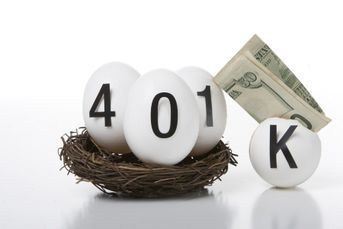Stocks drop sharply amid emerging-markets rout
Weak earnings combine with currency volatility send investors to the exits
U.S. stocks sank the most since June, capping the worst week for benchmark indexes since 2012, as a selloff in developing-nation currencies spurred concern global markets will become more volatile.
Caterpillar Inc., General Electric Co. and Boeing Co. slid at least 2.6% to pace losses in the Dow Jones Industrial Average. (INDU) Kansas City Southern plunged 15%, the biggest retreat since 2008, after reporting lower-than-estimated earnings. International Game Technology tumbled 15% as the maker of slot machines posted first-quarter profit that missed analysts’ projections.
The Standard & Poor’s 500 Index (SPX) retreated 2.1% to 1,790.29 to close at the lowest level since Dec. 17. The benchmark index declined 2.6% this week. The Dow slid 318.24 points, or 2%, to 15,879.11 Friday. The 30-stock gauge lost 3.5% this week. About 8.8 billion shares changed hands on U.S. exchanges, the busiest trading day of the year.
“The volatility of the emerging markets and the currency impacts are affecting U.S. markets,” Eric Teal, who helps oversee $3.5 billion as the chief investment officer at First Citizens BancShares Inc. in Raleigh, N.C., said. “Following the strong gains of last year, I think it’s to be expected that you might have an overreaction here of selling.”
EMERGING CONCERNS
Emerging-market currencies had their worst selloff in five years Thursday as Argentine policy makers devalued the peso by reducing support in the foreign-exchange market. The Turkish lira plunged, Ukraine’s hryvnia sank to a four-year low and South Africa’s rand weakened beyond 11 per dollar for the first time since 2008. China’s banking regulator ordered its regional offices to increase scrutiny of credit risks in the coal-mining industry, said two people with knowledge of the matter, signaling government concern about possible defaults.
Investors are losing confidence in some of the biggest developing nations, extending the rout in currencies that began last year when the Federal Reserve signaled it would slow the pace of its monthly purchases of Treasuries and mortgage bonds.
The MSCI Emerging Markets Index lost 1.5% Friday, extending its decline for the year to more than 5%, while Europe’s equity benchmark slid the most since June.
‘MASSIVE SELLOF’
Three rounds of Fed monetary stimulus have helped the S&P 500 rise about 165% from a 12-year low in 2009. The U.S. equity benchmark rallied 30% to a record last year, the most since 1997. Equities have since pared those gains, with the index down more than 3% for 2014.
“You’ve had a massive selloff in these emerging-market currencies,” Nick Xanders, a London-based equity strategist at BTIG Ltd.. “Ruble, rupee, real, rand: they’ve all fallen and the main cause has been tapering. A lot of companies that have benefited from emerging-markets growth are now seeing it go the other way.”
The S&P 500 trades at about 15.2 times the estimated earnings of its members, more than the five-year average multiple of 14.1, data compiled by Bloomberg show.
Ten companies in the S&P 500, including Procter & Gamble Co. (PG) and Bristol-Myers Squibb Co., reported results Friday. Of the 122 index members that have released earnings so far this season, 74% have beaten estimates for profit and 67% have exceeded sales projections, according to data compiled by Bloomberg.
Per-share profit for companies in the benchmark probably climbed 6.6% in the fourth quarter, while sales increased 2.6%, according to analysts surveyed by Bloomberg.
The Chicago Board Options Exchange Volatility Index (VIX), the gauge of S&P 500 options known as the VIX, surged the most since April, adding 32% to 18.14 Friday. The gauge rallied 46% this week, for the biggest weekly increase since May 2010.
Companies whose earnings are most tied to economic swings dropped. The Morgan Stanley Cyclical Index lost 3%, the most since April, as Whirlpool Corp. slid 5% to $145.68. An S&P gauge of homebuilders fell 3.4% for the steepest decline since August. D.R. Horton Inc. slipped 4.9% to $20.88 and PulteGroup Inc. fell 4.1% to $18.84.
TRANSPORTATION INDEX
The Dow Jones Transportation Average (TRAN), which reached a record Thursday, slid 4.1% for the biggest one-day decline since 2011. Delta Air Lines Inc. fell 4.3% to $31.11.
Phone, utility and consumer-staples stocks, which have the highest dividend yields among 10 S&P 500 groups, fell less than 1.2%, as yields on 10-year Treasuries fell to an eight-week low, boosting the allure of equity income.
Procter & Gamble climbed 1.2% to $79.18. The world’s largest consumer-goods maker posted second-quarter profit that topped analysts’ estimates as sales of products such as Pampers diapers rose in emerging markets.
Microsoft Corp. added 2.1%, the most in the Dow, to $36.81. Customers flocked to the company’s game consoles and cloud software last quarter, helping sales beat analysts’ projections.
Juniper Networks Inc. (JNPR) rallied 6.6% to $27.72 for the biggest gain in the S&P 500. The networking-equipment maker reported sales that exceeded analysts’ estimates. Revenue in the fourth quarter increased 12% to $1.27 billion from $1.14 billion a year earlier, the Sunnyvale, California-based company said yesterday in a statement. Analysts had predicted sales of $1.22 billion.
(Bloomberg News)
Learn more about reprints and licensing for this article.








